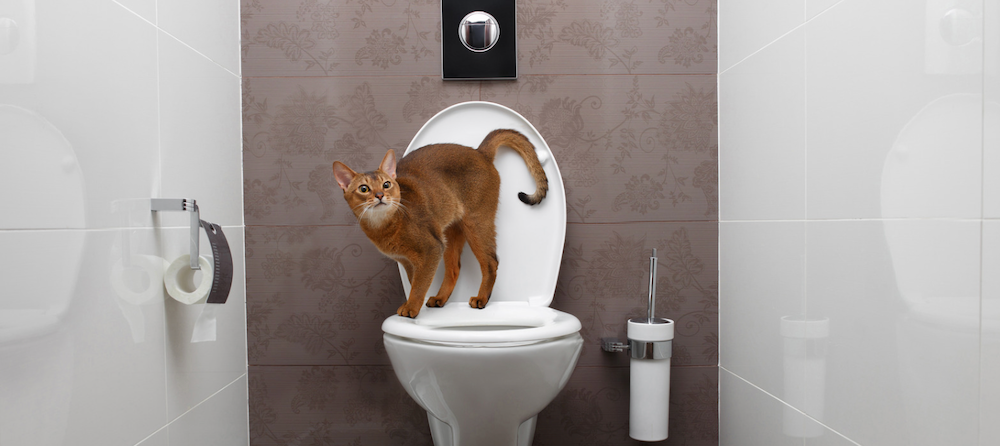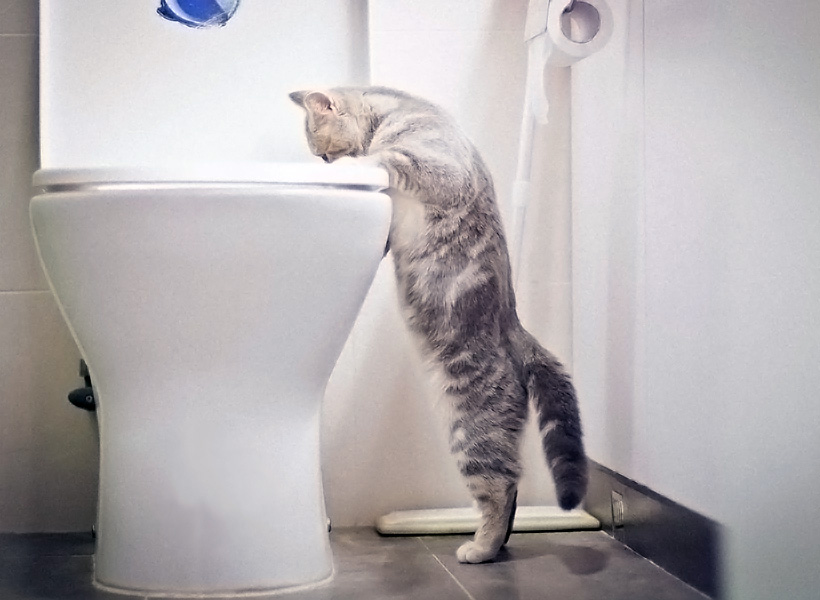We have unearthed this article on Don’t flush cat feces down the toilet below on the net and think it made good sense to discuss it with you over here.

Introduction
As feline proprietors, it's vital to bear in mind how we take care of our feline good friends' waste. While it might appear convenient to purge cat poop down the commode, this method can have damaging effects for both the environment and human health and wellness.
Ecological Impact
Flushing cat poop introduces hazardous microorganisms and parasites into the water system, presenting a significant threat to water ecological communities. These contaminants can negatively affect marine life and concession water top quality.
Wellness Risks
Along with ecological problems, purging feline waste can additionally pose health and wellness dangers to people. Pet cat feces might have Toxoplasma gondii, a bloodsucker that can trigger toxoplasmosis-- a potentially serious ailment, specifically for expectant females and individuals with weakened immune systems.
Alternatives to Flushing
Fortunately, there are safer and more liable means to take care of pet cat poop. Consider the adhering to options:
1. Scoop and Dispose in Trash
The most usual technique of getting rid of feline poop is to scoop it into an eco-friendly bag and throw it in the garbage. Make certain to make use of a devoted litter inside story and get rid of the waste without delay.
2. Use Biodegradable Litter
Select eco-friendly feline clutter made from materials such as corn or wheat. These clutters are eco-friendly and can be safely gotten rid of in the garbage.
3. Hide in the Yard
If you have a yard, take into consideration hiding cat waste in an assigned location far from veggie gardens and water resources. Make certain to dig deep enough to prevent contamination of groundwater.
4. Install a Pet Waste Disposal System
Buy a pet dog waste disposal system specifically developed for pet cat waste. These systems make use of enzymes to break down the waste, lowering odor and environmental influence.
Conclusion
Accountable animal possession prolongs beyond offering food and shelter-- it likewise involves correct waste monitoring. By refraining from purging feline poop down the bathroom and opting for alternate disposal methods, we can reduce our ecological footprint and safeguard human wellness.
Why Can’t I Flush Cat Poop?
It Spreads a Parasite
Cats are frequently infected with a parasite called toxoplasma gondii. The parasite causes an infection called toxoplasmosis. It is usually harmless to cats. The parasite only uses cat poop as a host for its eggs. Otherwise, the cat’s immune system usually keeps the infection at low enough levels to maintain its own health. But it does not stop the develop of eggs. These eggs are tiny and surprisingly tough. They may survive for a year before they begin to grow. But that’s the problem.
Our wastewater system is not designed to deal with toxoplasmosis eggs. Instead, most eggs will flush from your toilet into sewers and wastewater management plants. After the sewage is treated for many other harmful things in it, it is typically released into local rivers, lakes, or oceans. Here, the toxoplasmosis eggs can find new hosts, including starfish, crabs, otters, and many other wildlife. For many, this is a significant risk to their health. Toxoplasmosis can also end up infecting water sources that are important for agriculture, which means our deer, pigs, and sheep can get infected too.
Is There Risk to Humans?
There can be a risk to human life from flushing cat poop down the toilet. If you do so, the parasites from your cat’s poop can end up in shellfish, game animals, or livestock. If this meat is then served raw or undercooked, the people who eat it can get sick.
In fact, according to the CDC, 40 million people in the United States are infected with toxoplasma gondii. They get it from exposure to infected seafood, or from some kind of cat poop contamination, like drinking from a stream that is contaminated or touching anything that has come into contact with cat poop. That includes just cleaning a cat litter box.
Most people who get infected with these parasites will not develop any symptoms. However, for pregnant women or for those with compromised immune systems, the parasite can cause severe health problems.
How to Handle Cat Poop
The best way to handle cat poop is actually to clean the box more often. The eggs that the parasite sheds will not become active until one to five days after the cat poops. That means that if you clean daily, you’re much less likely to come into direct contact with infectious eggs.
That said, always dispose of cat poop in the garbage and not down the toilet. Wash your hands before and after you clean the litter box, and bring the bag of poop right outside to your garbage bins.
https://trenchlesssolutionsusa.com/why-cant-i-flush-cat-poop/

I am just very inquisitive about Can You Flush Cat Poo or Litter Down the Toilet? and I really hope you enjoyed my blog post. Do you know about someone else who is inquisitive about the niche? Why not promote it. Thank-you for your time spent reading it.
Call Today
Comments on “Prevent Clogs and Damage: Never Flush Cat Poop Down Your Toilet - Professional Recommendations”